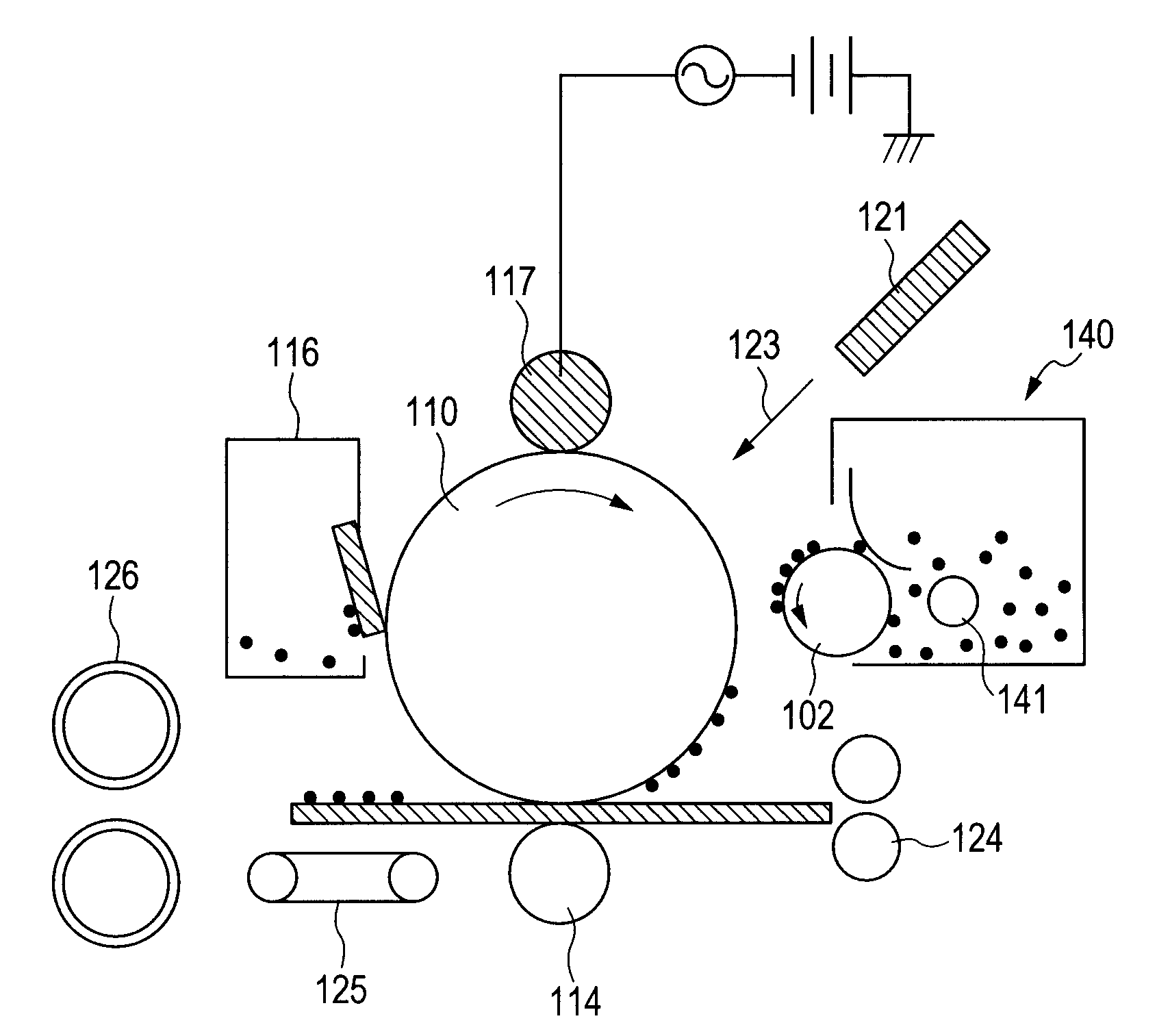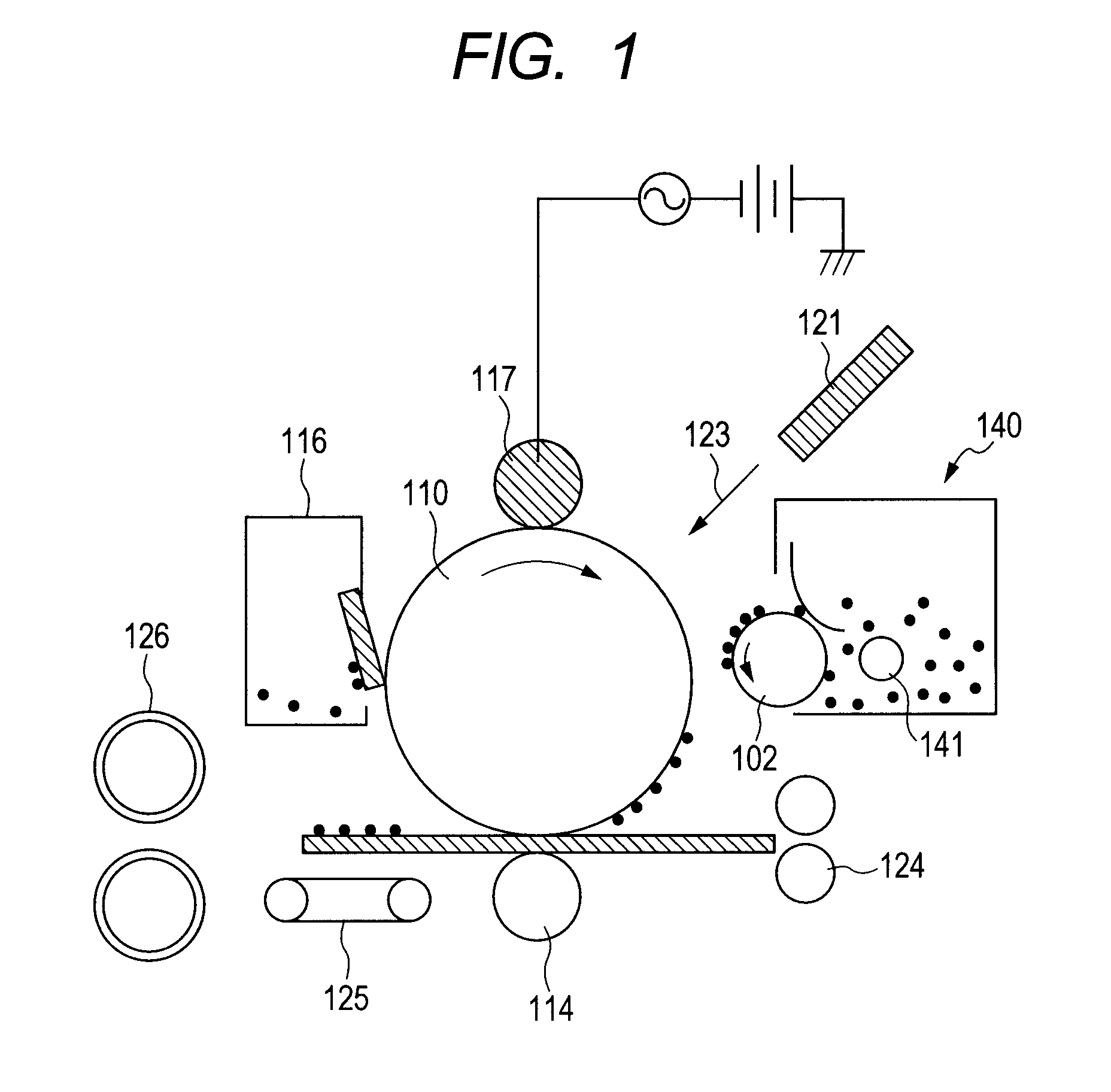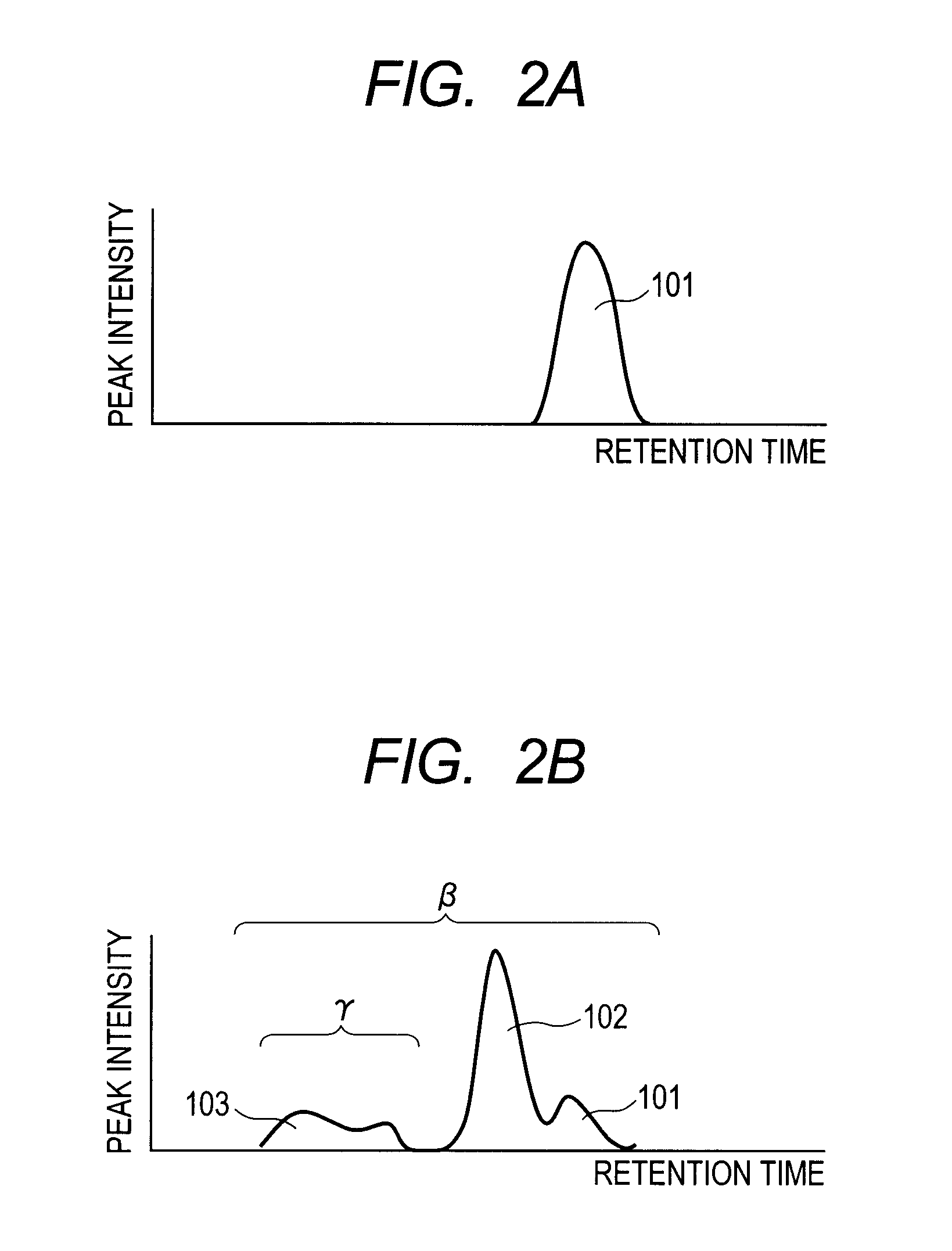Magnetic toner
a toner and magnetic technology, applied in the field of magnetic toner, can solve the problems of low-speed printers that are small in print volume and sometimes left unused for printing, image density degradation, specific problems ascribable to them, etc., and achieve excellent running stability and high image density
- Summary
- Abstract
- Description
- Claims
- Application Information
AI Technical Summary
Benefits of technology
Problems solved by technology
Method used
Image
Examples
example 1
Image Forming Apparatus
[0215]As an image forming apparatus, LBP3100 (manufactured by Canon) was used. The toner 1 was used, and transverse lines were printed with a coverage rate of 2% on 3,000 sheets in a one-sheet intermittent mode both in an environment of normal temperature and normal humidity (23° C. / 60% RH) and in an environment of high temperature and high humidity (32.5° C. / 80% RH). Then, in each environment, the printing system was allowed to stand for 7 days, and then again printing was performed, and the image density, fog and ghost after being allowed to stand were evaluated.
[0216]Consequently, both before and after the running test, images high in the density and free from the fog and ghost in the non-image area can be obtained. Even after the printing system was allowed to stand for 7 days, a satisfactory image with no decrease in the image density and free from the ghost was obtained. The evaluation results in an environment of normal temperature and normal humidity a...
PUM
| Property | Measurement | Unit |
|---|---|---|
| liquid temperature | aaaaa | aaaaa |
| liquid temperature | aaaaa | aaaaa |
| BET specific surface area | aaaaa | aaaaa |
Abstract
Description
Claims
Application Information
 Login to View More
Login to View More - R&D
- Intellectual Property
- Life Sciences
- Materials
- Tech Scout
- Unparalleled Data Quality
- Higher Quality Content
- 60% Fewer Hallucinations
Browse by: Latest US Patents, China's latest patents, Technical Efficacy Thesaurus, Application Domain, Technology Topic, Popular Technical Reports.
© 2025 PatSnap. All rights reserved.Legal|Privacy policy|Modern Slavery Act Transparency Statement|Sitemap|About US| Contact US: help@patsnap.com



